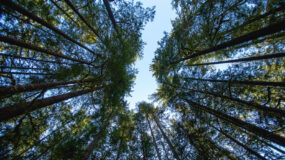The previously scheduled Department of Natural Resources (DNR) visit has been postponed until February 22, 2024 at 10 a.m. starting at the front gate. Members are encouraged to join as this will be an educational opportunity. Those who wish to have their lots assessed by DNR (with potential cost sharing for qualifying expenses and labor) should fill out the Permission to Enter Property Form and submit to the office by February 21, 2024.
To avoid further monetary expenses, the CCRC Board and VERT committees are asking park members to contribute and log volunteer hours towards wildfire mitigation efforts.
Each hour of submitted volunteer work counts as $31.80 towards the park’s requirement for Firewise certification and 233 total hours are needed. Logged volunteer hours can be on your own lots at any time, or during the park’s Wildfire Mitigation & Cleanup Days listed below.
Any logged hours can be submitted to the office or Michael.rosebaugh@gmail.com.
Please include your name, div/lot numbers, email or phone number, and hours logged including dates, activities, and hours. Alternatively fill out the Firewise volunteer sheet. To learn more about what type of work would qualify, please read Time and Expense Investment Examples.
Wildfire Mitigation & Cleanup Days
• Saturday, February 24, 9-11 a.m. Community Property; 1-3 p.m. Private Lots
• Saturday, March 23, 9-11 a.m. Community Property; 1-3 p.m. Private Lots
• Saturday, April 20, 9-11 a.m. Community Property; 1-3 p.m. Private Lots
• Saturday, May 25, 9-11 a.m. Community Property; 1-3 p.m. Private Lots
Focus of the Season
Firebreaks and Shaded Fuel Breaks
Our focus this season is on reducing the spread of a potential wildfire within our park. Our roads throughout the park act as Firebreaks which are obstacles to the spread of fire. Adjacent to our roads we will attempt to create Shaded Fuel Breaks which are strips of land on which the vegetation and debris have been reduced. A Shaded Fuel Break involves the reduction of flammable fuels, eliminating ladder fuels, and increasing the spacing of residual trees in order to minimize the risk of crown fires, resulting in reducing the spread of fire, and providing fire control opportunities.

Additional Tasks To Focus On
Increase the height to the base of tree crowns
- Prune densely packed trees that are skirted with small diameter dead branches.
Increase spacing between tree crowns
- Thin out smaller trees in crowded stands. It is also appropriate to do a variable-density thinning approach where you have skips and gaps of thinning.
Reduce surface fuels
- Cut/lop larger ‘floating’ debris on the ground into smaller pieces to allow those pieces full ground contact using a ‘Cut and Scatter’ method.
- Pile debris in small mounds in low spots to create ‘habitat piles’ for wildlife use outside the dripline of overhanging trees. Cover piles with fine branches followed by covering with leaves/compost.
- Perform in-place chipping to reduce debris to a size. Chips should remain where the debris came from.
- Avoid removing all debris and burning it in a central location.

